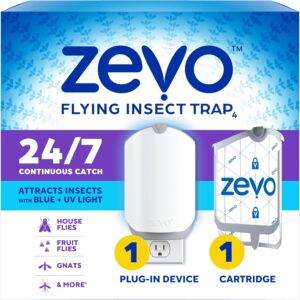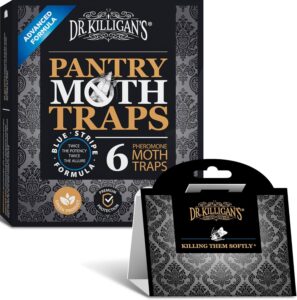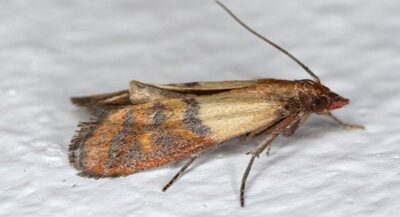Discovering tiny brown moths fluttering around your kitchen can be distressing. These pests are likely Indian meal moths—one of the most common pantry invaders in the United States. While they don’t bite or spread disease, they can contaminate your food and quickly multiply if left unchecked. This comprehensive guide will walk you through identifying indian meal moths, how to get rid of indian meal moths, and preventing these persistent pantry pests using proven methods that work.
Quick Picks: How to Get Rid of Indian Meal Moths Products
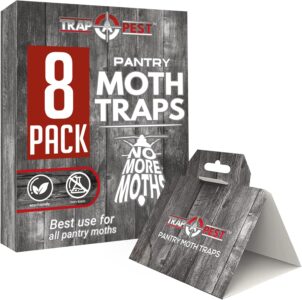
Editor’s Choice
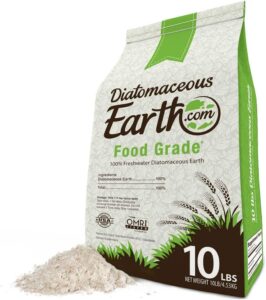
Natural Solution
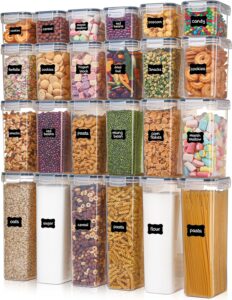
Prevention Essential
- The Complete 8-Step Guide to Eliminating Indian Meal Moths
- Product Recommendations for Indian Meal Moth Control
- DIY Solutions for Indian Meal Moth Control
- Understanding the Indian Meal Moth Life Cycle
- Indian Meal Moths vs. Other Pantry Pests
- Frequently Asked Questions About Indian Meal Moths
- Conclusion: Winning the Battle Against Indian Meal Moths
The Complete 8-Step Guide to Eliminating Indian Meal Moths
STEP 1: Identify the Invaders
Before you can tackle an infestation, you need to confirm what you’re dealing with. Indian meal moths (Plodia interpunctella) are among the most common pantry pests in North America.
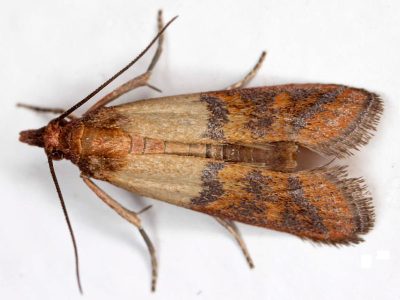
Adult moths are approximately 8-10mm (⅜ inch) long with distinctive two-toned wings: reddish-brown or copper on the outer two-thirds and grayish-white on the inner third near the body. The larvae are off-white or yellowish caterpillars with brownish heads that grow to about 13mm (½ inch) long before pupating.
What sets Indian meal moths apart from other pantry pests is their behavior and the evidence they leave behind:
- Webbing – Larvae spin distinctive silken threads through and over food, creating webbing that can mat food together
- Active at Night – Adult moths are primarily nocturnal and are attracted to light
- Erratic Flight Pattern – Adults fly with a distinctive zigzagging pattern, often near lights or food sources
- Food Preference – They infest dried foods including grains, cereals, nuts, dried fruits, powdered milk, chocolate, bird seed, and pet food
The Indian meal moth can complete its life cycle in as little as 28 days under ideal conditions. According to recent research, a single female can lay between 200-400 eggs during her short 5-7 day lifespan, with eggs hatching in just 2-14 days depending on temperature.
STEP 2: Find the Source of Infestation
Locating where the moths are breeding is crucial for effective elimination. The most common entry point is through already-infested packaged foods from the grocery store.
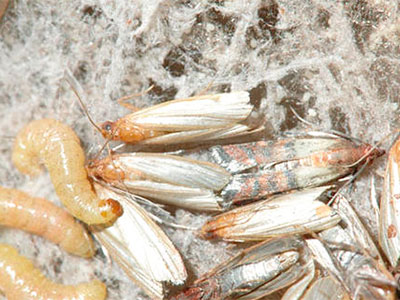
Thoroughly inspect these high-risk foods and areas:
Dried Foods
Check flour, cereal, pasta, dried beans, rice, nuts, dried fruits, crackers, cookies, cake mixes, and chocolate. Look for tiny holes in packaging, webbing, or larvae.
Pet Supplies
Inspect dry pet food, bird seed, and pet treats. These are often overlooked sources of infestations that can harbor hundreds of eggs.
Decorative Items
Examine dried flower arrangements, wreaths, and potpourri. Moths can lay eggs in these items, creating a persistent infestation source.
Overlooked Areas
Check behind appliances, under shelves, along ceiling corners, and inside electrical outlets where larvae may crawl to pupate, sometimes several meters from the original food source.
Don’t overlook unopened packages. Indian meal moth larvae can chew through plastic film, paper, and cardboard packaging. Even sealed containers might be infested if the pests were present before sealing.
STEP 3: Dispose of Infested Items Properly
Once you’ve identified infested foods and materials, proper disposal is crucial to prevent the infestation from spreading or returning.
- Bag securely – Place all infested items in sealed plastic bags to prevent escapees
- Remove immediately – Take the bags outside to an outdoor trash container, not your kitchen trash
- Check questionable items – When in doubt about a food item, discard it rather than risk keeping eggs or larvae
- Consider freezing first – For items you can’t bear to throw away, freeze them at 0°F (-18°C) for at least 4 days to kill all life stages before discarding
Some high-value items like nuts or specialty ingredients can be salvaged by heating in the oven at 140°F (60°C) for 15-20 minutes or freezing at 0°F (-18°C) for at least 4 days to kill all moth stages. However, this is only worth doing for expensive items that show no signs of actual infestation.
STEP 4: Clean Thoroughly
A deep, thorough cleaning is essential to remove any remaining eggs, larvae, or pupae hiding in your pantry or kitchen. Even missing a few can lead to a new infestation.
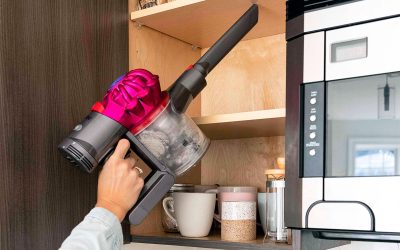
Follow this methodical cleaning process:
- Empty Everything Remove all items from pantry shelves, cabinets, and drawers. Leave nothing unchecked.
- Vacuum Thoroughly Use a vacuum with a hose attachment to reach deep into corners, cracks, crevices, and along shelf edges. Pay special attention to areas where shelving meets walls.
- Wash All Surfaces After vacuuming, wash all surfaces with hot, soapy water or a vinegar solution (1 part vinegar to 2 parts water). Don’t forget to clean the undersides of shelves and inside drawers.
- Check Unusual Spaces Indian meal moth larvae can travel surprising distances to pupate. Look along ceiling edges, behind appliances, inside light fixtures, and along window frames for cocoons or pupae.
- Discard the Vacuum Contents Immediately empty your vacuum cleaner outdoors and dispose of the contents in a sealed bag in an outdoor trash container.
Recent research shows that larvae often seek tight, protected spaces for pupation. Use an old toothbrush to clean along drawer tracks, shelf brackets, and corner seams where webbing and cocoons might be hidden.
STEP 5: Deploy Traps and Monitors
Pheromone traps are invaluable tools for both monitoring and controlling Indian meal moth populations. These traps contain synthetic female pheromones that attract male moths, disrupting the breeding cycle.

Pheromone Traps
- Contain synthetic female pheromones
- Attract and trap male moths
- Prevent breeding
- Monitor infestation levels
- Non-toxic and odorless to humans
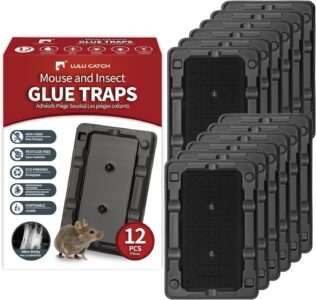
Sticky Traps
- No chemicals or attractants
- Capture both males and females
- Can be placed in multiple locations
- Helps monitor activity patterns
- Effective supplementary control
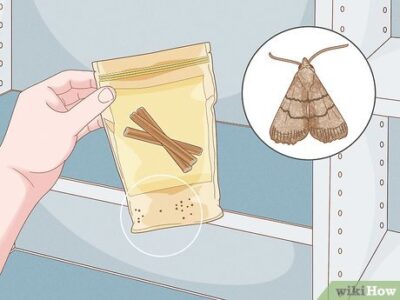
Homemade Traps
- Made with household items
- Use food as attractant
- Good for monitoring presence
- Less effective than commercial options
- Budget-friendly alternative
For a simple homemade trap, mix 1 cup of apple cider vinegar, ¼ cup of sugar, and a few drops of dish soap in a shallow container. Cover with plastic wrap, secure with a rubber band, and poke small holes in the top. The sweet scent attracts moths, while the soap breaks the surface tension, causing them to drown.
For best results with pheromone traps:
- Place traps in areas where moth activity has been observed
- Use at least one trap per 100 square feet
- Replace traps every 8-12 weeks (pheromones degrade over time)
- Continue using traps for at least 3 months after the last moth sighting
STEP 6: Consider Natural Repellents and Deterrents
Several natural substances can help repel Indian meal moths and prevent reinfestation without introducing harmful chemicals into your food storage areas.
| Natural Deterrent | How to Use | Effectiveness | Duration |
|---|---|---|---|
| Bay Leaves | Place whole leaves on pantry shelves or crush and place in small sachets | Moderate | Replace monthly |
| Cedarwood | Use cedar blocks, chips, or essential oil on cotton balls | Good | 2-3 months |
| Lavender | Dried sachets or essential oil diffuser | Moderate | 1-2 months |
| Diatomaceous Earth (Food Grade) | Lightly dust shelves and corners (avoid food contact) | Very Good | Until cleaned |
| Peppermint | Cotton balls with 5-10 drops of essential oil | Good | 2-3 weeks |
| White Vinegar | Wipe surfaces with 50/50 vinegar and water solution | Good (cleaning) | Until next cleaning |
Even natural repellents should be kept separate from food items. Use sachets and containers to prevent direct contact with food products. Always use food-grade diatomaceous earth if using near food storage areas.
STEP 7: Implement Prevention Strategies
Preventing future infestations is much easier than dealing with established ones. Implement these strategies to keep Indian meal moths away for good:
Proper Storage
Transfer vulnerable foods from original packaging into airtight glass, metal, or hard plastic containers with tight-fitting lids. Moths cannot chew through these materials.
Temperature Control
Freezing newly purchased dry goods for 3-7 days at 0°F (-18°C) kills any eggs or larvae that might be present before storage.
Regular Cleaning
Vacuum and wipe pantry shelves monthly to remove spilled food particles that might attract pests. Pay special attention to cracks and crevices.
Smart Shopping
Inspect packages carefully before purchasing. Avoid damaged packages or those with tiny holes. Buy smaller quantities of susceptible foods.
Additional prevention tips:
- Store seasonal or rarely used items like holiday baking ingredients in the refrigerator or freezer
- Use older products before newer ones to maintain rotation
- Keep pet food in sealed containers and avoid storing large quantities
- Consider placing bay leaves or other natural deterrents inside storage containers
- Maintain continuous monitoring with pheromone traps to catch new introductions early
Implement the “First In, First Out” (FIFO) method for pantry management. This means using older products before newer ones, reducing the chance for pests to establish in long-stored items.
STEP 8: Know When to Call Professionals
While most Indian meal moth infestations can be managed with the methods described above, some situations warrant professional intervention:
- Persistent Infestations If moths return despite multiple thorough cleaning and prevention efforts, you may need professional help to find hidden infestation sources.
- Widespread Problems When infestations have spread beyond the kitchen to multiple rooms or throughout the home, professional treatment may be more effective.
- Commercial Settings Restaurants, grocery stores, warehouses, and food processing facilities should address infestations immediately with professional pest control services.
- Health Concerns If family members have respiratory issues or allergies that might be aggravated by moths or their frass (waste), professional treatments may be safer.
Professional pest control services can:
- Conduct thorough inspections to locate all infestation sources
- Apply targeted treatments in hard-to-reach areas
- Implement commercial-grade monitoring systems
- Provide customized prevention plans
- Offer follow-up visits to ensure complete elimination
Product Recommendations for Indian Meal Moth Control
The right products can make eliminating and preventing Indian meal moths much easier. Here are our top recommendations:
Pantry Moth Traps with Pheromone Attractant
Editor's ChoiceHow Does It Work
How to Use
- Remove trap from packaging and fold into tent shape
- Peel protective covering from sticky surface
- Place traps in pantry, on shelves, or near known infestation areas
- Position traps every 10-15 feet for best coverage
- Replace every 8-12 weeks or when sticky surface is full
- Non-toxic and odorless to humans
- Easy to set up and monitor
- Effective at both catching moths and preventing breeding
- Works continuously for up to 3 months
- No chemicals near food items
- Only attracts male moths
- Must be replaced periodically
- Less effective in very large spaces without multiple traps
Food-Grade Diatomaceous Earth
Natural SolutionHow Does It Work
How to Use
- Apply a thin dusting to pantry shelves, corners, and crevices
- Use a small brush or powder applicator for precise application
- Focus on areas where larvae might travel
- Reapply after cleaning or when dust is disturbed
- Keep food items in sealed containers separate from the powder
- 100% natural and non-toxic
- Effective against multiple pantry pests
- Long-lasting until physically removed
- No chemical residues or odors
- Safe for use around food storage areas
- Can be messy if overapplied
- Respiratory irritant if airborne (apply carefully)
- Must keep dry to remain effective
- Takes time to work (not an instant kill)
Airtight Food Storage Containers Set
Prevention EssentialHow Does It Work
How to Use
- Transfer dry goods from original packaging immediately after purchase
- Fill containers no more than 80-90% to allow for proper sealing
- Wipe rims clean before sealing to ensure proper closure
- Label with contents and purchase date for proper rotation
- Clean thoroughly between refills
- Complete physical protection from pests
- Extends shelf life of dry goods
- Stackable design maximizes storage space
- Transparent walls for easy identification
- Dishwasher safe for easy cleaning
- Higher initial investment than plastic bags
- Requires counter or shelf space
- Some foods need to be transferred into smaller containers
Electric UV Light Insect Trap
Tech SolutionHow Does It Work
How to Use
- Place in areas where moth activity has been observed
- Position 3-6 feet off the ground for optimal effectiveness
- Keep away from competing light sources in the evening
- Run continuously for best results
- Replace sticky trap insert every 4-6 weeks
- Works 24/7 automatically
- Captures moths without chemicals
- Modern design blends with home decor
- Effective against multiple flying insects
- Safe around food preparation areas
- Requires electricity
- Needs periodic replacement of sticky traps
- Less effective in brightly lit areas
- Primarily targets adult moths, not larvae
DIY Solutions for Indian Meal Moth Control
If you prefer natural or homemade approaches to pest control, these DIY solutions can be effective against Indian meal moths:
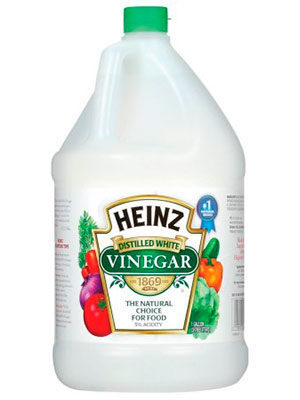
Vinegar Cleaning Solution
- Mix equal parts white vinegar and water
- Add 10 drops of peppermint or tea tree essential oil
- Use to wipe down all pantry surfaces
- Kills eggs and deters future infestations
- Safe, non-toxic alternative to chemical cleaners
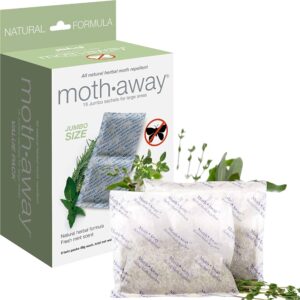
Herbal Moth Repellent Sachets
- Combine dried bay leaves, rosemary, and lavender
- Add a few drops of cedarwood essential oil
- Place in small cloth bags or sachets
- Position throughout pantry and storage areas
- Replace every 1-2 months as scent fades

Apple Cider Vinegar Trap
- Mix 1 cup apple cider vinegar with 1/4 cup sugar
- Add a few drops of dish soap to break surface tension
- Pour into a shallow dish with plastic wrap cover
- Poke small holes in the plastic wrap
- Place near infested areas; replace weekly
Homemade solutions are typically less effective than commercial products specifically designed for Indian meal moths. For serious infestations, consider combining DIY methods with commercial pheromone traps for best results.
Understanding the Indian Meal Moth Life Cycle
Knowing the life cycle of Indian meal moths helps target control efforts at the most vulnerable stages. The complete cycle from egg to adult can take anywhere from 30 days to several months, depending on temperature and food availability.
| Life Stage | Duration | Appearance | Behavior | Control Methods |
|---|---|---|---|---|
| Egg | 2-14 days | Tiny, whitish or grayish, nearly invisible to naked eye | Laid directly on or near food sources | Freezing, heat treatment, diatomaceous earth |
| Larva | 2-41 days (temperature dependent) | White to pinkish caterpillar with brown head, grows to 1/2 inch | Active feeding stage, creates silk webbing in food | Disposal of infested foods, diatomaceous earth, thorough cleaning |
| Pupa | 7-10 days | Cocoon made of silk, often hidden in cracks or crevices | Inactive transformation stage | Vacuuming, crack and crevice treatment |
| Adult | 5-7 days | Two-toned wings (copper/rust and gray), 1/2-5/8 inch wingspan | Mating and egg-laying, nocturnal, attracted to light | Pheromone traps, UV light traps, manual removal |
The Indian meal moth life cycle accelerates in warmer conditions. At 86°F (30°C), development from egg to adult can occur in just 28 days, while at 68°F (20°C) it may take 50+ days. This explains why infestations often worsen in summer months or in heated homes during winter.
Indian Meal Moths vs. Other Pantry Pests
Several other pests can infest pantries and stored foods. Knowing how to identify them helps you select the right control methods.
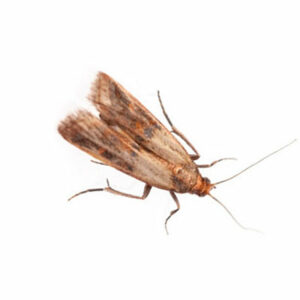
Indian Meal Moth
- Size: 8-10mm length
- Wings: Two-toned (copper/brown and gray)
- Signs: Silken webbing in food, larvae in products
- Damage: Contamination with webbing and frass
- Preference: Grains, cereals, dried fruits, nuts, pet food
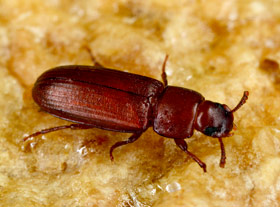
Pantry Beetles
- Size: 2-5mm length
- Appearance: Hard-shelled, various colors
- Signs: Holes in packaging, cast skins
- Damage: Contamination, reduced nutritional value
- Preference: Whole grains, flour, cereals, spices
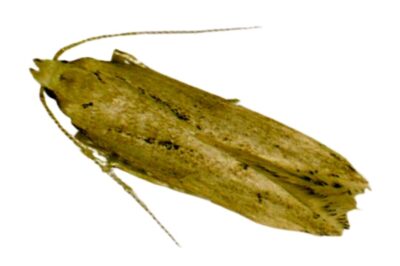
Other Grain Moths
- Size: Similar to Indian meal moths
- Wings: Typically uniformly colored (not two-toned)
- Signs: Less webbing, more clumping of food
- Damage: Similar contamination issues
- Preference: More specialized food preferences
The control and prevention methods described for Indian meal moths are generally effective against all common pantry pests. Proper food storage, regular cleaning, and monitoring with traps will help manage any type of stored product pest.
Frequently Asked Questions About Indian Meal Moths
Are Indian meal moths harmful to humans?
Indian meal moths do not bite, sting, or transmit diseases to humans. They are not physically harmful, but they can contaminate food with webbing, fecal matter, shed skins, and dead bodies, making the food unappetizing and potentially reducing its nutritional value.
If you accidentally consume food containing Indian meal moth eggs or larvae, it’s generally not dangerous, though it’s certainly unpleasant. The main issue with these pests is food contamination and waste, not direct health risks.
How long can Indian meal moths live?
Adult Indian meal moths typically live for only 5-7 days. Their sole purpose during this brief adult stage is to mate and lay eggs—they don’t even have functioning mouthparts for feeding. However, the complete life cycle from egg to adult can range from 30 days to several months depending on temperature, humidity, and food quality.
Under ideal conditions (75-85°F with adequate food), the entire life cycle can be completed in just 28-35 days, allowing for multiple generations per year in homes with consistent temperatures.
Can Indian meal moths damage clothing or furniture?
Unlike clothes moths, Indian meal moths do not feed on fabrics or furniture. They specifically target food products, especially those derived from plants such as grains, cereals, flour, nuts, and dried fruits. However, the larvae may crawl onto clothing or furniture while searching for a place to pupate, potentially leaving behind silken threads or stains.
If you find webbing on non-food items, it’s likely that the larvae were simply seeking a protected place to transform into adults, not feeding on these materials.
Where do Indian meal moths come from originally?
Despite their name, Indian meal moths are not native to India. The name comes from their discovery feeding on Indian corn (maize) meal in North America. They are believed to have originated in the Mediterranean region but have since become distributed worldwide through global food trade.
Today, they are considered one of the most widespread stored product pests globally, found on every continent except Antarctica. Most infestations in homes come from bringing in already-infested food products from stores.
Will Indian meal moths go away on their own?
Indian meal moths will not typically disappear on their own as long as they have access to food sources and suitable temperatures for breeding. Without intervention, they will continue to reproduce and spread to other food items in your pantry.
The only exception might be in unheated spaces during winter in cold climates, where temperatures below 50°F (10°C) can halt their reproduction and development. However, they may simply become dormant until temperatures rise again, rather than dying off completely.
How far can Indian meal moths travel?
Adult Indian meal moths can fly considerable distances within a home—typically up to 300-400 feet from their food source. This allows them to spread from the original infestation point to other areas of your home where food might be stored.
The larvae can also travel surprisingly far—often several meters from food sources—when seeking places to pupate. This is why you might find cocoons in unexpected places like ceiling corners, behind picture frames, or inside light fixtures far from the pantry.
Conclusion: Winning the Battle Against Indian Meal Moths
Indian meal moths may be persistent pantry invaders, but with the right approach, you can eliminate them and prevent future infestations. Success requires a comprehensive strategy: thorough cleaning, proper food storage, targeted treatments, and ongoing monitoring.
Remember these key points for long-term Indian meal moth control:
- Act Quickly At the first sign of moths, implement your control plan. Early intervention is much easier than dealing with an established infestation.
- Be Thorough Half-measures don’t work. Inspect all potential food sources, clean thoroughly, and monitor continuously.
- Prevent Reinfestation Transfer all vulnerable foods to airtight containers immediately after purchase, inspect packages before buying, and maintain clean storage areas.
- Stay Vigilant Even after you’ve eliminated an infestation, keep monitoring traps in place for at least three months to catch any resurgence early.
With persistence and the right tools, you can reclaim your pantry and enjoy pest-free food storage. The methods in this guide have proven effective for countless homeowners dealing with Indian meal moth problems. By following these steps, you’ll not only eliminate current pests but also create an environment where future infestations are much less likely to occur.
Consider creating a regular pantry maintenance schedule—perhaps quarterly—to inspect food products, clean shelving, replace pheromone traps, and refresh your airtight storage containers. Prevention truly is the best medicine when it comes to Indian meal moths.
